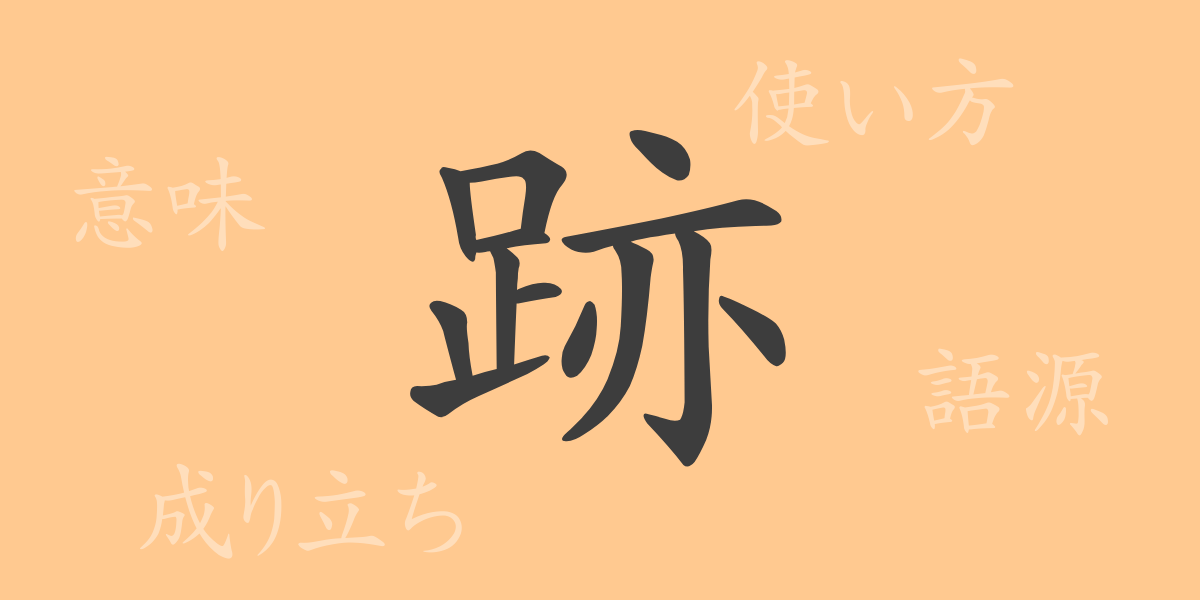The depth of Japanese character culture is profound, with each Kanji playing a significant role in daily life. This article highlights the kanji “跡” (あと), exploring its origins, meanings, usage, and the nuances it brings to the Japanese language. The character “跡” carries historical and cultural significance and remains applicable in various contexts today. Let’s rediscover the allure of “跡” through this detailed examination.
Origins of 跡 (あと)
The kanji “跡” originated from an ideogram in ancient China, initially depicting footprints. Early forms in oracle bone script showed a combination of feet and earth, symbolizing the marks left by stepping. Over time, the character evolved into the modern “跡”, consistently representing the traces left behind. This transformation reflects how the fundamental concept of a trace or a mark has been preserved through the ages.
Meaning and Usage of 跡
“跡” means a trace or mark, referring to the remnants or evidence of something that has ended or existed. It applies to visible paths left by people or animals and metaphorically to the legacies of individuals’ deeds or historical events. “跡” is used both in literal terms to denote physical marks and figuratively to describe the impact or influence left behind.
Readings, Stroke Count, and Radical of 跡
The kanji “跡” is nuanced in its presentation and interpretation:
- Readings: On’yomi is ‘セキ’, and Kun’yomi is ‘あと’.
- Stroke Count: “跡” consists of 13 strokes.
- Radical: The radical of “跡” is the foot radical (あし・そくぶ), linking it to concepts of walking and paths.
Phrases and Proverbs Using 跡
Various idioms and proverbs utilize “跡”, illustrating its depth in the Japanese language:
- 跡を絶つ (あとをたつ): Means to end a lineage or tradition, used especially in contexts of family lines or cultural practices ceasing.
- 跡を追う (あとをおう): Literally following in someone’s footsteps, metaphorically learning from predecessors’ achievements or methods.
- 跡を濁さず (あとをにごさず): To finish things cleanly without leaving any unresolved matters, ensuring thorough completion of tasks.
- 名跡 (めいせき): Refers to a distinguished family or lineage, including names and family crests of prestigious households.
- 遺跡 (いせき): Archaeological sites where remains and artifacts from past civilizations are found.
Conclusion on 跡
The kanji “跡” embodies more than just a character; it represents a link to the past, conveying cultural and historical narratives through its usage in various contexts. As a commonly used kanji in Japan, “跡” intertwines with daily life, highlighting its significance. Through this article, we hope you have gained insights into the profound history and cultural depth of “跡”, appreciating its continued relevance in conveying the nuances of Japanese language and heritage.

























